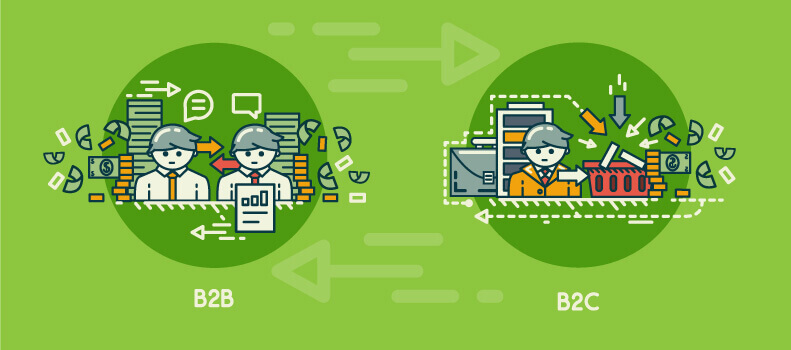One of these lead types is not like the other!
And actually, there are three different lead types your business should be aware of.
Understanding these three types of leads is a critical step toward understanding how to approach your leads—and how to grow your business through their purchases.
So, what is it that makes these three lead types important? And just exactly what is a lead, anyway? This is vital information every business owner needs to know, so let’s start exploring.
What is a sales lead?
Simply put, a sales lead person or business who may be interested in your products or services. A lead is typically someone whose contact information you have so you can reach out to them and make a connection. This contact information is likely to include their name and their email address, mailing address and/or phone number.
They may have provided their information to you like through entering their information on a contact form or you may have purchased their contact information through a data company.
Depending on how you gather lead information, you may know an awful lot about your leads including where they are located, how much money they make, whether they are married, and whether or not they have children.
Or if your leads are businesses, not consumers, you may have detailed information about the various companies you are targeting, such as their size, location, number of employees, and even their annual sales volume.
This information is all necessary when you’re trying to target businesses or consumers who will purchase your products and services, but it’s not enough! In order to sell well, you also need to have a solid understanding of the three types of sales leads you may encounter along your seller’s journey.
Is a sales lead the same as a sales prospect?
In a word: No! A lead is a person or business you have reached out to, but who has not responded, and you have not spoken with. These could be potential customers who filled out a form on your website or who is on your cold-calling list.
In contrast to this, a prospect is someone who you have actually spoken with. They have answered your communication and you now have a two-way dialog with them. What you really need to know here is that you need to have the lead before you can get the prospect.
What are the different lead types?
Now that you know the difference between leads and prospects, let’s go one level deeper. Sales leads can be divided into three general categories.

Cold leads
Cold leads are leads that have shown no interest in your business or your products or services. They have made no attempt to contact you at all and may have been resistant to your attempts to contact them.

Warm leads
Warm leads are leads that have shown an interest in your business and/or your products and services. These include marketing qualified leads (MQL) and sales qualified leads (SQL). MQLs may fill out a contact form, follow you on social media or sign up for a newsletter. SQLs may have engaged with you directly, perhaps by asking a question. However, at this point, you don’t know their specific need.

Hot leads
Hot leads are leads that have clearly indicated they are interested in what you have to offer, and they have clearly identified their need. They also have the resources and authority to make a purchase and are ready to do so. Hot leads include product qualified leads (PQL), those who have tried your product or service in some way, and service qualified leads, which are leads who have indicated they are ready to buy.
Why is sales lead type important?
The type of lead you are dealing with tells you one very important thing—how much nurturing they need to be moved along the sales funnel.
Let’s start with hot leads. Hot leads are ready to buy. Chances are, you have had a lot of communication with them and have already nurtured your relationship with them. At this point, they don’t need much from you to close the sale.
On the other hand, a warm lead has not indicated a desire to buy. However, they have shown an interest in your company and your products or services. You want to connect with these leads, answer their questions, provide them with useful information and let them know about your offers. You need to work to get these leads to the sale, but not as hard as you do with cold leads.
Cold leads need the most nurturing. They have not engaged with you directly, so you have to get them across that threshold first. This requires you to build your credibility and reliability with them through one-way communication before they will engage in two-way communication. A purchase is only a possibility if you manage to turn them into a warm lead.
How do you find sales leads?
Every company relies on generating a constant pipeline of leads and customers to stay in business.
Hot leads are often found via prior customers or by great marketing, such as a display ad, at the exact right moment.
Finding warm leads takes some work. You can do it organically or through advertising. Leads you get organically means you have engaged with them through platforms such as a blog or social media. They have come to you, and they have gotten to know you. You are automatically nurturing these leads and they become very warm over time.
Advertising can also bring in warm leads with some effort and a little money invested. These are leads that have responded to advertising, such as pay-per-click or Facebook advertising. They come in warm, but you still have to work hard to nurture the relationship.
You can also find cold leads by buying a list of leads. Now, these leads are cold in the sense that they have not shown any interest in your business specifically. However, they are still qualified leads in the sense that they fit your target audience. They have shown interest in businesses like yours or have needs that fit your offering.
Should you buy sales leads?
You might think starting out with warm leads is the better option. If you have the time and energy to invest in generating warm leads, then maybe it is. But it takes months to generate organic leads and even longer to see sales grow. When it comes to advertising, it still takes weeks and a financial investment that you may not see a return on.
When you buy leads, they may not know about your business specifically, but they are highly targeted. You might even be able to consider them pre-qualified. Best of all, once you pay for these leads, you have a complete list of hundreds or thousands of leads and you can start nurturing them immediately. These are the type of leads that can quite easily be turned into warm leads.
However, this will only happen if you buy high-quality leads, and to do that you need help from a reputable lead provider such as Salesgenie®.
We invest millions every year and dedicate over 300 full-time researchers to ensure our business and consumer records are kept up to date. In other words, when you purchase our mailing and email lists, you can expect to get the highest data quality for your sales, marketing, research, and reference needs.
Need help getting started?
Having a better understanding of lead types can guide you toward more business success. And if you find yourself wishing for more leads for your business, it’s time to connect with the experts at Salesgenie®. We’ll help you create the perfect business lead list or consumer lead list so you can get the results you’re looking for, for your next marketing campaign.







